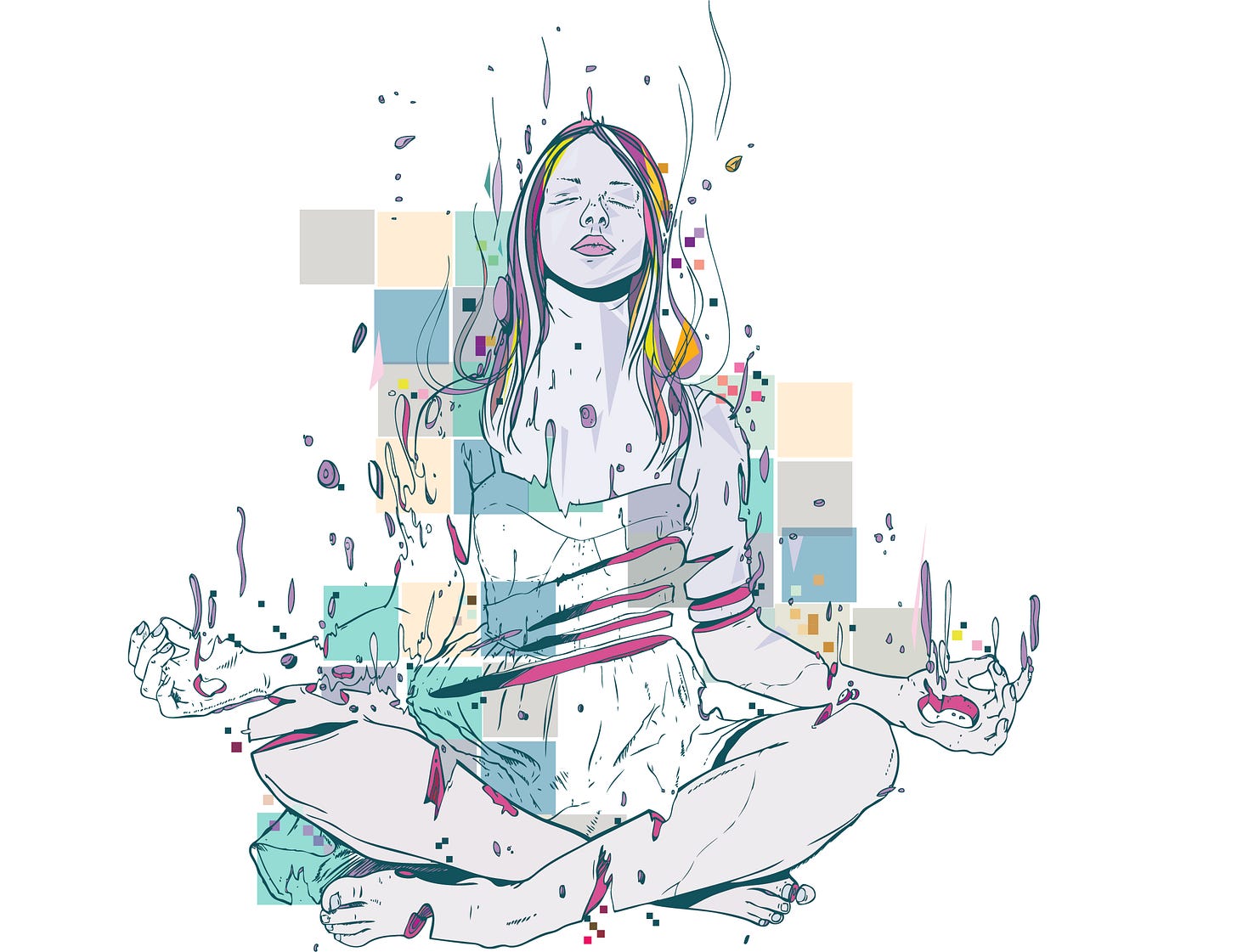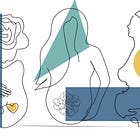What's next?
Feels like a good time for a recap and a look to the future.
I want to start with a big ‘ol THANK YOU! Thank you for being along this journey with me and following along as I bake an idea with all the ingredients on full display.
Not gonna lie, I’m pretty jazzed up about what’s coming down the pike. As we cruise into the testing+probing+learning stage of the project, we have countless avenues to explore, loads of dots to connect, application ideas around each corner…. If only there was a way to let my brain leak onto my computer and magically translate all the mushy wheel-spinning into something intelligible!
Alas, brain mush is not a great option, so we’ll go one post at a time. I am glad you’re along for the ride!
More on that below, but first…
Quick recap
(and homework if you want to catch up or re-read!):
We have a starting point – mapping the web of stressors related to modern American motherhood — here:
We have a meaty deep dive into stress and stress physiology here:
We have a whole series on why the map centers around pregnancy (for now!)
Here:
Here:
And here:
With a fun bonus post where
challenges my attachment to tight definitions of stress here:And, we have audio (kinda)!
For most of the posts, I have recorded a voice over (including this one) because, if you’re like me, you might prefer to consume content through your ears and/or have a tendency towards multi-tasking. Bonus for those who listen – you get a chance to hear just how fired up I can get about these topics (spoiler: I am very excitable 🤓)
Next up – it’s all connected
Here is a little rant I tucked into the end of my More about Molly post:
“We cannot improve women’s health or solve the maternal health crisis without recognizing how the stress related to modern American motherhood impacts health via the stress pathways. Stress pathways affect every system in the body, from the brain to the cardiovascular system, immune system, metabolic system....
At our most basic level, we are animals responding to our surroundings and circumstances. As humans, we process the input in more complicated ways – not exactly about survival in the wild – but the physiological response we trigger is all the same. As are the health consequences.
We have all felt the effects of chronic stress.
Reframing stress in the context of American motherhood allows for new opportunities to improve health. We can identify low hanging fruit. We can chip away. We can affect health at an individual and population level by eliminating, mitigating, and buffering stress exposure. But, in order to do that, we have to see and embrace how it all connects.
When I see the issues through the lens of stress (both risk and opportunities for solutions), I see that:
Lack of paid leave is a health issue.
Childcare access and disruption are health issues.
Workplace discrimination is a health issue.
Gun control is a health issue (adding onto the fact that guns kill and injure people daily, the idea of guns killing and injuring people = stress)
Racism, sexism, ableism are health issues.
Abortion access is a health issue (adding to the fact that people die from limited access to this important medical procedure, the pressure of not having access = stress).
The motherhood penalty is a health issue.
The gendered mental labor load is a health issue.
And on…
Now my brain craves “how?”
And that is where the Maternal Stress Project comes in.”
The first public facing go at this approach came out last month in an article I co-authored with
for NYT Opinion. Through the lens of stress, we examined why child care is healthcare, emphasizing the critical need for federal funding to increase broad access to stable, affordable, high quality child care.With a focus on the ties to parental health, especially mothers’ mental health, the article stirred up a response that can only be summarized as: “duh!”…
…and that is everything we could have hoped for! Clearly, we’re on to something.
Adding evidence-based weight to problems and solutions that lack “evidence”
A key piece of this project is the “how?” of it all. That feels like a missing link.
How are these societal and structural issues related to health via stress? How can solutions directly and indirectly impact health from a psychological and physiological perspective?
As a physiologist, “how?” is my favorite type of question. And examining the “how?” from a starting point of gappy science due to historical underfunding and under-appreciated research topics, is my kind of jam.
From here, I plan to go deeper into the research on stress buffers and mitigation tools. I will tackle “resilience”. I will examine what makes each stressor node a psychological stressor and dig up any available research on related health outcomes while highlighting the gaping holes in research and how we might go around them until research and research funding catches up.
As I’ve said before, I fully acknowledge the limits of my expertise. My role here is the hundred-foot-view-coordinator of the broader map, peering through the lens of stress, from both a health impact and solutions perspective. To go deep into each stressor node, I’m calling up the experts. Experts doing the research, experts working directly in the space related to each node, and those who are experts in their own lived experiences1. These are the voices that will help peel back the layers, examine the connections, and explore the solutions. I have already had a bunch of conversations and I’m finding that the connections between stressor nodes are fascinating in both expected and unexpected ways. Will start sharing more of that in the coming weeks.
Another key goal of the project is creating a narrative shift around stress. The brilliant
(who moved her newsletter, , to Substack! Get on it. It’s AMAZING) summarized the Maternal Stress Project this way:But what if stress wasn’t seen as a personal problem, but the result of social policy failures? What if as a society we worked to remove the stressors of motherhood, rather than give glib advice to “treat” the symptoms?
All solutions come back to this.
The solutions we’ll be exploring more already feel tangible. Reasonable. Realistic. I have hope for the road ahead. I really do feel that recategorizing the way we approach the world, the work we do, the work we elevate, the work we fight for, can truly move the needle to improve the health of women, mothers, parents, caregivers, and everyone in between.
Here we go!
Quick note about subscriptions: The Maternal Stress Project is an educational and idea-spreading initiative and I want it to be available to all. You can subscribe for free and get all posts delivered right to your inbox. However, if you feel compelled to bump up to a paid subscription, your generous support will facilitate the growth of this project… and be much appreciated!
Sharing and spreading the word is equally valuable and appreciated!
In many ways, this is a community project. Everyone has a story to share and each individual experience fuels the learning. Please chime into the comments whenever you feel compelled to or… maybe I’ll start a reverse “office hours”?
Also — if you are an expert in an area that I’m tackling along the way and you feel like I’ve overstepped, miscommunicated, misinterpreted or just generally said some something dumb, please let me know. This is a learning stage and learning in the open is rough!











Bravo. Stress is far worse than we imagine. For everything. Western childbirth is a minefield. Be ready.
https://open.substack.com/pub/gbray/p/childbirth-western-style?r=1d6qya&utm_campaign=post&utm_medium=web